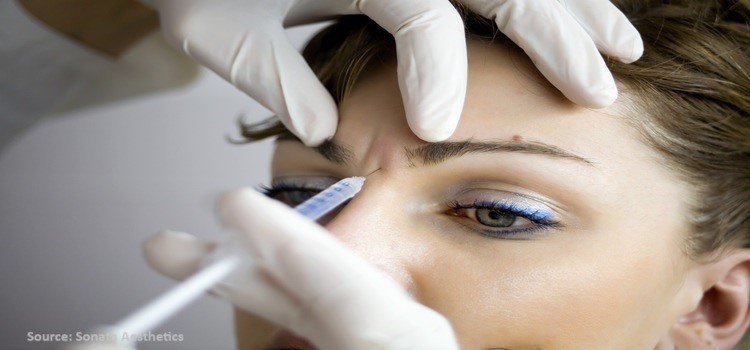
Anti-Foaming Agents Market by Type (Water-Based, Oil-Based, Silicone-Based, and Others), by Application (Pulp & Paper, Oil & Gas, Paints & Coatings, Water Treatment, Food & Beverages, and Others)– Global Opportunity Analysis and Industry Forecast, 2024–2030
Industry: Materials and Chemical | Publish Date: 08-Apr-2024 | No of Pages: 273 | No. of Tables: 152 | No. of Figures: 122 | Format: PDF | Report Code : N/A
Market Overview
The Anti-Foaming Agents Market size was valued at USD 5.73 billion in 2023, and is predicted to reach USD 7.55 billion by 2030, with a CAGR of 4.02% from 2024 to 2030. Anti-foaming agents, also known as defoamers, are chemical additives used to reduce or prevent the formation of foam in industrial processes or products. They work by breaking down foam bubbles, which are undesirable in various applications such as manufacturing, food processing, and wastewater treatment. Anti-foaming agents typically contain surface-active compounds that disrupt the foam structure, causing the bubbles to collapse or coalesce. By controlling foam formation, anti-foaming agents help improve process efficiency, product quality, and safety.
Stringent Rules and Regulations in Various Industries Propels the Market Growth
Stringent regulations in industries such as food and beverage production are compelling manufacturers to uphold stringent quality standards to ensure product safety and consumer satisfaction. Anti-foaming agents play a crucial role in this regard by preventing excessive foam formation during various manufacturing processes, including fermentation, cooking, and mixing. By incorporating anti-foaming agents, companies can maintain consistency in product texture, appearance, and taste, meeting regulatory requirements while enhancing operational efficiency. As a result, the demand for anti-foaming agents in the food and beverage industry continues to grow, driven by the imperative to adhere to regulatory mandates and uphold product quality.
Increasing Adoption of Anti-Foaming Agents in Industrial Processes is Boosting the Growth of the Market
The adoption of anti-foaming agents in industrial processes is witnessing a notable uptick as companies seek to optimize productivity and minimize disruptions caused by foam-related issues. By incorporating anti-foaming agents into their operations, manufacturers can effectively mitigate foam formation, which often leads to equipment malfunction, process interruptions, and decreased production efficiency. Additionally, these agents help reduce operational costs associated with downtime, maintenance, and product wastage caused by foam-related issues. As a result, industries across various sectors are increasingly recognizing the value of anti-foaming agents in streamlining their processes, driving the growing demand for these additives in the market.
Rising Technological Advancement Fuels the Market’s Growth
The ongoing technological advancements in the field of anti-foaming agents are playing a crucial role in driving market growth. These innovations are focused on creating more efficient and environmentally friendly solutions that meet the evolving needs of industries worldwide. By leveraging cutting-edge technologies, manufacturers are developing anti-foaming agents that offer superior performance while also adhering to stringent environmental regulations. These advancements not only enhance the effectiveness of anti-foaming agents in controlling foam formation but also contribute to sustainability efforts by reducing harmful emissions and minimizing environmental impact. As a result, industries are increasingly adopting these innovative anti-foaming agents to improve their operational efficiency and sustainability practices, thereby fueling the growth of the market.
Environmental concerns and potential health risks restrains the market growth
Environmental concerns regarding the use of anti-foaming agents, coupled with potential health risks, are impeding market growth. Concerns over the environmental impact of these agents, including their persistence in ecosystems and potential harm to aquatic life, have led to regulatory scrutiny and increased demand for eco-friendly alternatives. Additionally, the health risks associated with certain anti-foaming agents, such as allergic reactions or respiratory issues, have raised consumer awareness and prompted a shift towards safer alternatives. These factors collectively hinder the expansion of the anti-foaming agents market as companies seek to address environmental and health-related challenges while meeting industry demands.
Introduction of Biodegradable and Enzyme-Based Alternatives Creates Opportunities for the Market
The anti-foaming agents’ market is poised for growth with the development of solutions derived from biodegradable and renewable resources, along with enzyme-based alternatives. These innovations offer eco-friendly alternatives to traditional anti-foaming agents, addressing environmental concerns and driving demand from industries seeking sustainable solutions. By leveraging biodegradable materials and enzymes, manufacturers can meet the growing demand for environmentally responsible products while tapping into new growth opportunities in various sectors. This shift towards sustainable anti-foaming agents reflects a broader trend towards eco-conscious practices, positioning the market for significant expansion in the future.
North America Dominates the Anti-foaming Agents Market
The increasing demand for processed and convenience food is significantly fuelling the anti-foaming agents market in the region. With consumer lifestyles becoming more fast-paced, there's a noticeable shift towards ready-to-eat and on-the-go food products. This trend has led to a surge in demand within the food processing industry, where anti-foaming agents play a crucial role. These agents are essential for preventing foam formation during various stages of food production, such as cooking, frying, and packaging. For instance, Dow Corning Corporation offers its XIAMETER brand silicone anti-foaming agents that are designed to improve productivity in food and beverage chemistry by effectively minimizing foam-related issues encountered during food processing. With Dow Corning's silicone anti-foaming agents, food manufacturers can address diverse processing conditions, ensuring consistent product quality and operational efficiency. This underscores the importance of innovative solutions in meeting the evolving needs of the food processing industry in North America.
Also, the growth of the pharmaceutical industry in North America significantly influences the expansion of the anti-foaming agents market in the region. North America's dominance in global pharmaceutical sales, constituting 52.3% as reported by the European Federation of Pharmaceutical Industries and Associations, underscores the region's robust demand for pharmaceutical manufacturing processes. Also, the US market alone accounted for 64.4% of sales for new medicines launched between 2017 and 2022, emphasizing its pivotal role in pharmaceutical innovation and consumption. As pharmaceutical companies strive for operational excellence and cost optimization, they seek innovative solutions to streamline their processes. The reliability and effectiveness of anti-foaming agents contribute to improved manufacturing efficiency, enabling pharmaceutical manufacturers to meet the growing needs in the region.
Asia-Pacific to Show Steady Growth in the Anti-Foaming Agent’s Market
Asia-Pacific is expected to witness a steady growth in the anti-foaming agents market owing to the region's rapid urbanization and industrialization, which has led to an increased demand for processed and convenience foods, personal care products, and industrial chemicals. According to the UN Habitat, over half of the global urban population, comprising more than 2.2 billion individuals, resides in Asia. Projections indicate that by 2050, the urban population in Asia will surge by 50%, adding an additional 1.2 billion people to urban areas. This significant urbanization trend underscores the escalating need for products and services to support urban living, including processed foods, personal care items, and industrial chemicals. Consequently, the demand for anti-foaming agents in manufacturing processes is expected to rise in tandem with urbanization rates.
Furthermore, advancements in technology and innovation are driving the growth of the anti-foaming agents market in the Asia Pacific region. Manufacturers are continually investing in research and development to create novel formulations and delivery systems that address specific application requirements while enhancing the efficacy of anti-foaming agents. These innovations are attracting the attention of industries seeking more efficient and sustainable solutions to their foam-related challenges, further propelling the adoption of anti-foaming agents across diverse sectors.
Competitive Landscape
Several market players operating in the anti-foaming agents market include Munzing, Dow Corning, Wacker Chemie, BASF SE, Evonik Industries AG, Procurement Building Air Products & Chemicals, Inc., Ashland Inc., Ecolab Inc., Shin-Etsu Chemical Company Ltd., and Kemira Oyj. These market players are adopting various strategies, including expansions to increase their market presence.
For instance, in march 2023, Wacker announced new innovation center for biotech silicone specialties in the US. The establishment of the innovation center aims to drive research and development of new biotech silicone specialties, which could potentially include anti-foaming agents.
Also, in November 2022, BASF announced the completion of the expansion and transformation of defoaming agent capacity at its Dilovasi plant in Turkey. The new production line increased the company's on-site production capacity to better meet the growing demand for high-performance Foamaster and Foamstar products in Southeast Europe, the Middle East, and Africa.
KEY MARKET SEGMENTS
By Type
-
Water-Based
-
Oil-Based
-
Silicone-Based
-
Other Types
By Application
-
Pulp & Paper
-
Oil & Gas
-
Paints & Coatings
-
Water Treatment
-
Food & Beverages
-
Other Applications
By Region
-
North America
-
The U.S.
-
Canada
-
Mexico
-
-
Europe
-
The U.K.
-
Germany
-
France
-
Italy
-
Spain
-
Denmark
-
Netherlands
-
Finland
-
Sweden
-
Norway
-
Russia
-
Rest of Europe
-
-
Asia-Pacific
-
China
-
Japan
-
India
-
South Korea
-
Australia
-
Indonesia
-
Singapore
-
Taiwan
-
Thailand
-
Rest of Asia-Pacific
-
-
Rest of the World (RoW)
-
Latin America
-
Middle East
-
Africa
-
REPORT SCOPE AND SEGMENTATION:
|
Parameters |
Details |
|
Market Size in 2023 |
USD 5.73 Billion |
|
Revenue Forecast in 2030 |
USD 7.55 Billion |
|
Growth Rate |
CAGR of 4.02% from 2024 to 2030 |
|
Analysis Period |
2023–2030 |
|
Base Year Considered |
2023 |
|
Forecast Period |
2024–2030 |
|
Market Size Estimation |
Billion (USD) |
|
Growth Factors |
|
|
Countries Covered |
28 |
|
Companies Profiled |
10 |
|
Market Share |
Available for 10 companies |
|
Customization Scope |
Free customization (equivalent up to 80 working hours of analysts) after purchase. Addition or alteration to country, regional, and segment scope. |
KEY PLAYERS:
-
Munzing
-
Dow Corning
-
Wacker Chemie
-
BASF SE
-
Evonik Industries AG
-
Procurement Building Air Products & Chemicals, Inc.
-
Ashland Inc.
-
Ecolab Inc.
-
Shin-Etsu Chemical Company Ltd.
-
Kemira Oyj




 Speak to Our Analyst
Speak to Our Analyst

































